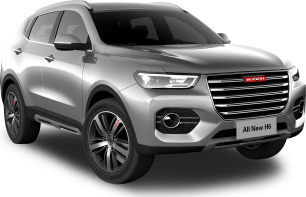In a quest to make its range more straightforward for buyers Skoda has simplified the Kamiq range down to two variants for 2025.
The bad news is it’s no cheaper. Actually, it continues its march up the price-scale, now starting from $32,890, before on-road costs, or $33,990 drive-away for the new entry-point Select.
The good news is, for the money Skoda has packed in even more standard equipment.
The Select is only available with the smaller 1.0-litre 85TSI engine and offers a pretty comprehensive list of stuff, including LED headlights, 17-inch alloys, an 8.0-inch digital dash with an 8.25-inch multimedia touchscreen, wireless Apple CarPlay and Android Auto connectivity, dual-zone climate and keyless entry with push-button start.
There's also a leatherbound steering wheel with cloth seat trim and manual adjust front seats, four USB-C outlets, heated and power folding wing mirrors with an auto-dimming rear view mirror. It also scores some upgraded kit for the active safety suite, as well as drive modes and paddle shifters.
You can also option this grade with the 'Signature Pack', which adds adaptive cruise control and ‘Park Assist’, an electric tailgate, 18-inch alloy wheels, the larger 10.25-inch multimedia touchscreen, tinted windows, carpet floor mats, interior ambient lighting, chrome exterior highlights, an alternate interior trim with suede highlights, and rear privacy glass.
At the top of the range is the new Monte Carlo which starts from $42,690, before on-roads, or $44,990 drive-away.
It scores a larger 1.5-litre four-cylinder 110TSI engine, and adds adaptive cruise control, lane keep assist with lane guidance and park assist to the safety suite.
Standard equipment also includes 18-inch alloys, upgraded ‘Matrix’ LED headlights, ‘Sport Chassis Control’ suspension, the larger 10.25-inch digital dash and 9.2-inch multimedia touchscreen, a panoramic sunroof, 10-speaker premium audio, heated front seats with a heated steering wheel, sports front seats with power adjust for the driver, as well as black highlights on the exterior trim and soft-touch carbon-look highlight trims on the inside.
Both grades get some of Skoda’s ‘simply clever’ features like an umbrella integrated into the driver’s door, a ticket holder on the windscreen, a washer funnel integrated into the reservoir and phone pockets on the backs of the front seats.
According to Skoda, the slightly higher prices for both grades this time around are offset by several thousand dollars of increased value in equipment.
On the flip side, though, some gear has been removed from the Kamiq range entirely, including leather seats, wireless phone charging, heated rear seats, and voice control for the multimedia system.
Does it represent value compared to its rivals? It’s relative. Yes, even the base version is more affordable than any Subaru Crosstrek, but you can’t get all-wheel drive, while a Mazda CX-3 can be had for just $26,950, before on-roads, but doesn’t offer the same level of base equipment.
The HR-V is more expensive and offers less gear for the money. It seems ever-increasing prices are a segment-wide problem.
The biggest challenge is new Chinese rivals. Haval’s Jolion is physically bigger and can be had in hybrid form for less money ($32,990 drive-away), while the Chery Omoda 5 ($27,990) and MG ZST (from $26,490) are cheaper and a size-up. It’s easy to see the temptation for mainstream buyers.














































 copy.png)











